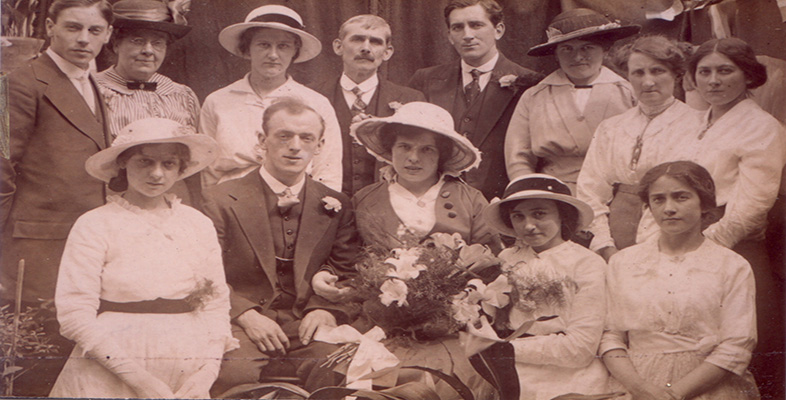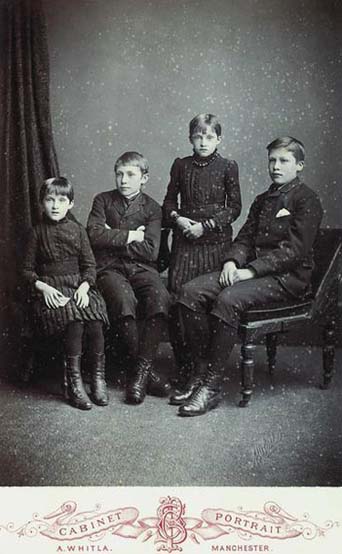4.8.3 Personal possessions
Most accessories in studio portraits were supplied by the studio. However, it was not uncommon for sitters to introduce items that held a special significance for them, such as children's toys, competition trophies and awards gained in the course of a career. As we should by now expect, any personal items were intended to reflect credit on the sitter.
If we can distinguish the routine studio accessory from the prized personal possession, we may be able to elicit a few more nuggets of information about the sitter.
Activity 17
Can you identify anything in Image 34 that may be a personal possession rather than a studio accessory?
Answer
Though photographs were commonplace accessories, sitters did sometimes introduce their own photographs of loved ones who, for whatever reason, could not appear in the portrait in person. The girl on the left of this group is holding a portrait. Under a magnifying glass this appears to be an adult male.
This portrait is curious because the children have no contact with each other but are likely to be brothers and sisters. The girls are wearing dresses of a similar style. This was normal practice for sisters in the Victorian period. The boys, too, are wearing similar outfits. Bands of material around the waist, cuffs and skirts of their dresses were made of crepe, the material that was traditionally worn during periods of mourning following a death in the family.
I know from other documented examples that orphaned children were sometimes photographed as a group before they were dispersed amongst relatives to continue their lives apart. It is not too far-fetched to surmise that the death of the father who is featured in the photograph has triggered a similar fate for these children. Their impending separation is foretold in their poses.

